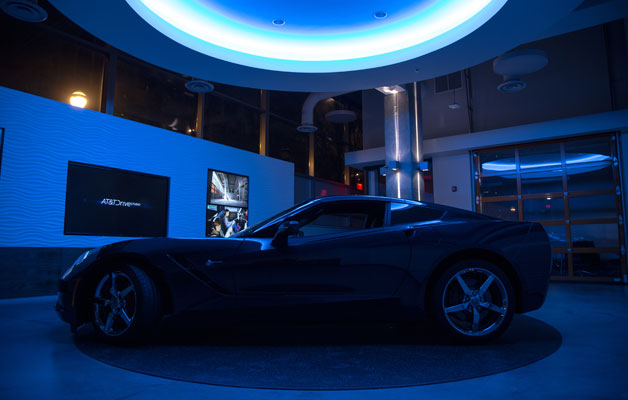AT&T Aims to be a Force in Autonomous, Connected Cars
With several new announcements coming out of CES 2017, AT&T is planning to position itself as the go-to provider of connected vehicle communications.
January 6, 2017

Once all those autonomous cars are ready to hit the road there's going to be a big question as to how they're going to communicate with each other. The Center for Automotive Research recently released a report on efforts to “harmonize” vehicle connectivity, but there's no standard set thus far. But AT&T looks to be positioning itself to provide the backbone of connected vehicle communications.
 The telecomm giant has announced it has inked a deal with the American Center for Mobility to be its exclusive cellular network provider through the year 2020. The non-profit American Center for Mobility, based in Ypsilanti Township, Mich., is a roughly 335-acre facility designed for testing and development of autonomous and connected vehicle technologies. The new deal with AT&T means that projects developed at the center will rely on AT&T's communications network and that AT&T could be at the center of new vehicle-to-anything (V2X) and connected and automated vehicle (CAV) solutions.
The telecomm giant has announced it has inked a deal with the American Center for Mobility to be its exclusive cellular network provider through the year 2020. The non-profit American Center for Mobility, based in Ypsilanti Township, Mich., is a roughly 335-acre facility designed for testing and development of autonomous and connected vehicle technologies. The new deal with AT&T means that projects developed at the center will rely on AT&T's communications network and that AT&T could be at the center of new vehicle-to-anything (V2X) and connected and automated vehicle (CAV) solutions.
"For a car to be fully connected and automated, it needs to be able to 'talk' to everyone and everything around it in a highly secure manner," John Maddox, President and CEO of the American Center for Mobility said in a statement. "AT&T is bringing its cellular network strength and industry leadership into a comprehensive CAV test facility, and we're thrilled to have them as our first industry collaborator."
In another statement, Chris Penrose, President, Internet of Things Solutions, AT&T added, "We want to create a safe, scalable and cost-effective driverless future. To get there, we have to do it together. ... The American Center for Mobility will provide an environment that will further cross-industry collaboration. Together, we'll pave the way for innovations that change how we think about driving."
Features provided by the American Center for Mobility include replicas of real world test environments, including a 2.5-mile highway loop. It also contains a number of driving environments including intersections, overpasses, roundabouts, and a 700-foot curved tunnel. The facility says it is also capable of simulating various weather conditions for autonomous vehicles.
The partnership with The American Center for Mobility comes in addition to AT&T's own research initiatives into connected vehicles. In 2014 the company announced its own connected car lab, the AT&T Drive Studio, a 5,000-square foot facility in Atlanta targeted at developing connected vehicle technologies as well as AT&T Drive, “a modular, global automotive platform.”
|
AT&T is also showcasing a new V2X communications platform at CES 2017. Developed in partnership with Delphi and Ford, the platform is designed to implement vehicles into a smart city by allowing them to communicate with each other and with other parts of the smart city infrastructure using AT&T's LTE network. The ultimate goal is to use V2X communication to enhance automotive safety by communicating things such as road and weather conditions, hazardous drivers, and collisions between vehicles to allow them to respond appropriately. AT&T believes this will also have an environmental impact by reducing traffic congestion.
In December 2016, the National Highway Transportation Safety Administration proposed a rule that would require connected vehicles to be able to speak with each other using Dedicated Short Range Communications (DSRC) technology to transmit data, such as location, direction, and speed to nearby vehicles. AT&T's LTE network would extend the range of DSRC.
"We're moving from today's connected car to a fully autonomous vehicle. Our work with Delphi and Ford will deliver safer, more secure, cost-effective and efficient solutions to do this," Penrose said in a statement. "This technology has the ability to drastically reduce accidents and save lives," Jim Zizelman, Vice President, Engineering, Delphi added in a statement. "DSRC and LTE both have a unique role to play. The combination will help speed the adoption of V2X overall."
Chris Wiltz is the Managing Editor of Design News
[Image source: AT&T]
About the Author(s)
You May Also Like

.jpg?width=300&auto=webp&quality=80&disable=upscale)


